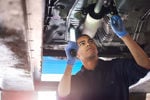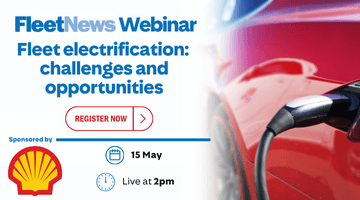Richard Bruce, director, Office for Low Emission Vehicles
One of the privileges of working for government is the chance to work on policies that can affect millions of people.
The government’s policy on ultra-low emission vehicles (ULEVs) is one of these.
It’s an area with the potential to affect almost everyone in the UK: transforming our towns and cities, driving significant inward investment and putting the UK automotive sector and its supply chain in a great competitive position for decades to come.
It’s also vital to helping the UK achieve its carbon targets and improving energy security.
Ultimately, however, this is a policy that is simply about the choices individuals and companies make about the car or van they want to buy.
If you look at the array of government and other support on offer to nudge people in the direction of ULEVs, it’s pretty compelling: zero car tax, enhanced capital allowances, lower company car tax, up to £8,000 in grants, subsidised infrastructure, and congestion charge exemption in London.
But although these incentives can help, they will never deliver a sustainable ULEV market on their own without there being ULEV cars and vans that people actually want to drive and own.
Reassuringly, there are clear signs that there is ever increasing ‘demand pull’ for ULEVs and feedback from owners gives a clear idea of why this technology will become increasingly mainstream.
People are not necessarily buying these vehicles for ‘green’ reasons. Instead they rave about the quietness, smoothness and lack of vibration of electric propulsion (just talk to those who drove the fuel cell taxis at the Olympics), about the benefits of instant torque from zero revs, and about lower maintenance costs and spectacularly low running costs.
There’s no denying that there is currently a limited number of ULEV models available and they are not suitable for every duty cycle.
But more models are coming every quarter and as people try the technology and are impressed, they tell their peers and word spreads.
It’s no surprise therefore that we’ve just had a record quarter of plug-in grant claims.
Our challenge now is to work with manufacturers to better explain these wider benefits, and that’s exactly what we’re doing.
Expect to see a ground-breaking communications campaign in early 2014, jointly funded by ULEV manufacturers and the government.
Find your nearest electric vehicle charging point


















FGR Nissan Leaf - 07/11/2013 17:57
Currently the ULEVs available are too expensive or don't meet users' "duty cycles", or in English, they have too limited a range. What is the range of an EV in real world conditions, that is stuck in traffic in winter with lights, wipers, heated windows/mirrors and more importantly an actual heater all operating? What happens when you get stuck on the M25 (perhaps only a couple of miles from home) for hours in winter, how do you keep warm? You don't. Politically Correct councils and Government departments are pretty much the only adopters at the moment, because the figures and usability don't stack up, but they can tick the "aren't we green" box.